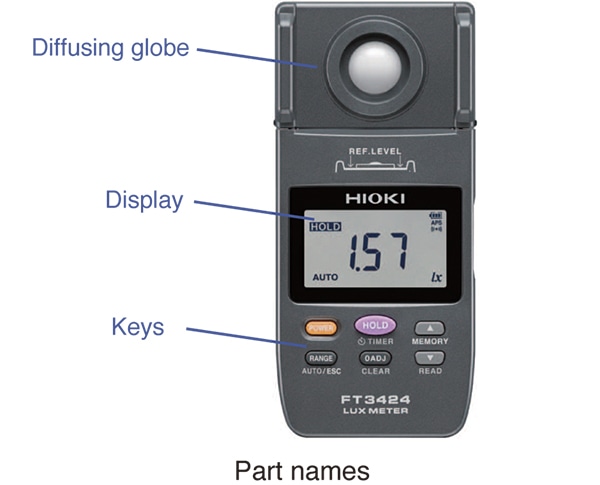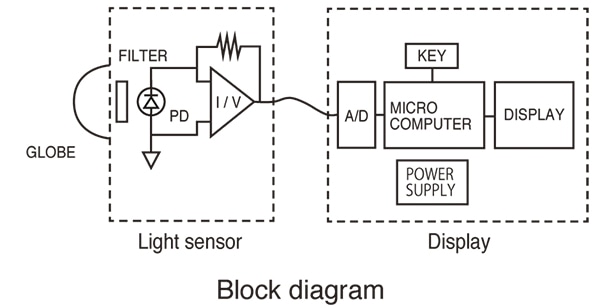Lux Meter | Measurement Methods and Principles
Illuminometer principles
Illuminometers quantify the brightness of a lit surface by measuring luminous flux per unit of area. The instrument must have the same sensitivity as the human eye for each light wavelength, and they must perform cosine correction for the angular incidence of light. (The JIS C 1609-1 standard defines performance requirements for illuminometers.)
The illuminometer’s light sensor consists of a photodiode that converts light into an electrical signal, an optical filter that ensures the same sensitivity as the human eye, and a diffusing globe that facilitates cosine correction, thereby satisfying the requirements for this type of instrument. (Block diagram)
How to Use the Lux Meter
Basic introduction to using a Hioki lux meter.
Introduces how to use Hioki’s FT3424 lux Meter, from zero-adjustment and the hold function to making measurements. Since the instrument’s memory function lets it store measured values, there’s no need to take notes by hand in the field. In addition, a timer hold function and connection cable make it possible to measure illuminance after moving away from the instrument.


